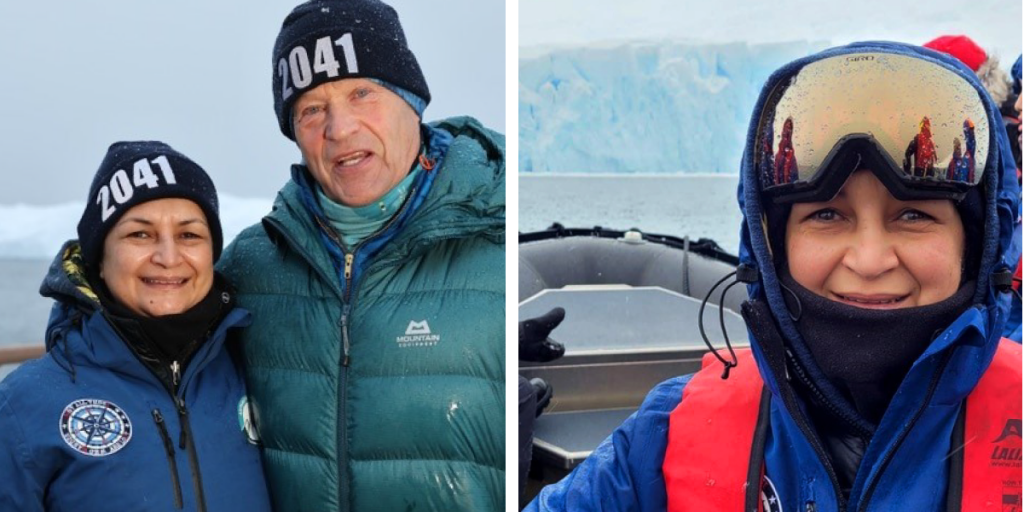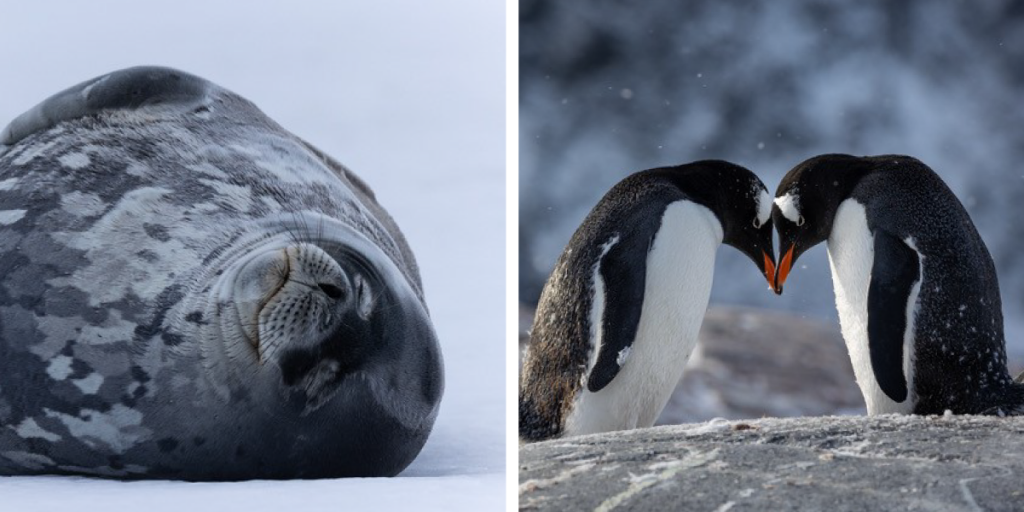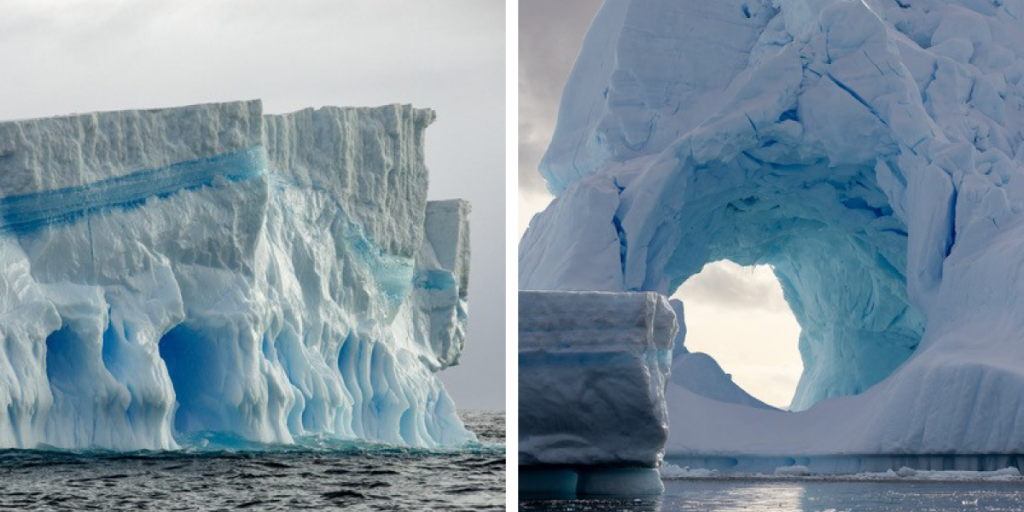Net-Zero Hero: Amal Morse
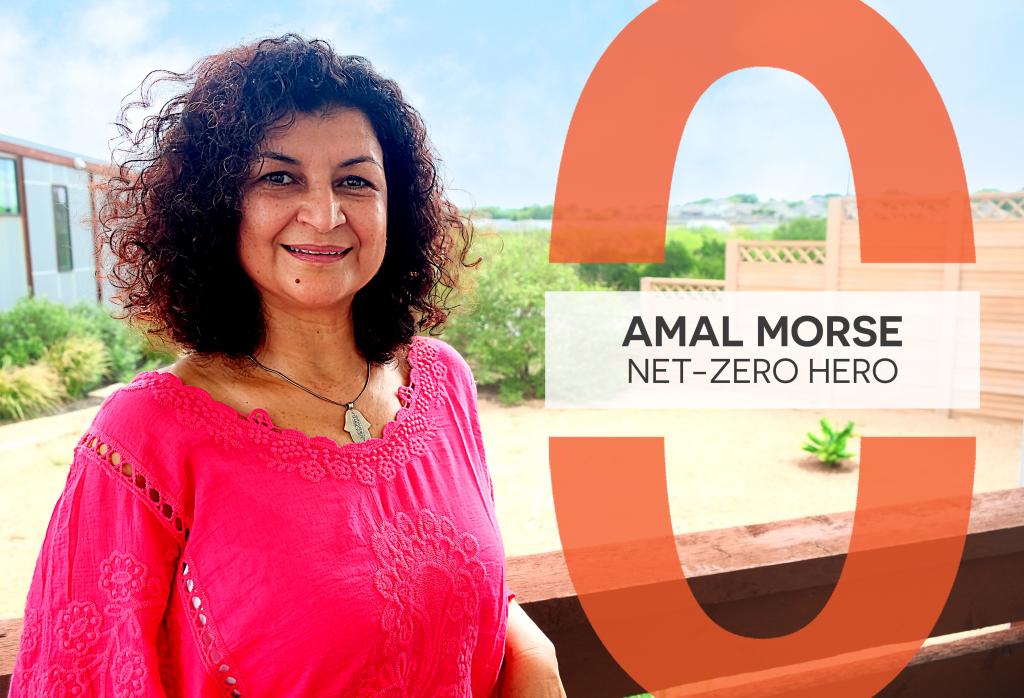
I’m helping to make Austin Net-Zero by living in a tiny house, being mindful of the impact of my personal actions on the environment, and participating in the 2041 ClimateForce Antarctic Expedition.
Meet our newest Net-Zero Hero: Amal Morse! Amal is an Austinite, documentary filmmaker, and passionate climate advocate. While Amal focuses on living a green lifestyle in all her daily actions, last year Amal got to go on the experience of a lifetime. In March 2022, Amal was one of 170 participants in the 2041 ClimateForce Antarctic Expedition. She was one of nine women explorers from around the world whose planned expeditions were chosen to be funded by Grape-Nuts Cereal in honor of their 125th anniversary.
We met with Amal at her tiny house in Austin to chat about this once-in-a-lifetime trip, plans for an upcoming documentary on climate change, and what it means to be a woman in this work.
What inspired you to take action?
While my small contributions to the protection of the environment — such as recycling, responsible shopping, composting, and living in a tiny house — are very important, I was aware that climate change is a very complex issue and that I needed to have a better understanding of it if I was going to contribute more.
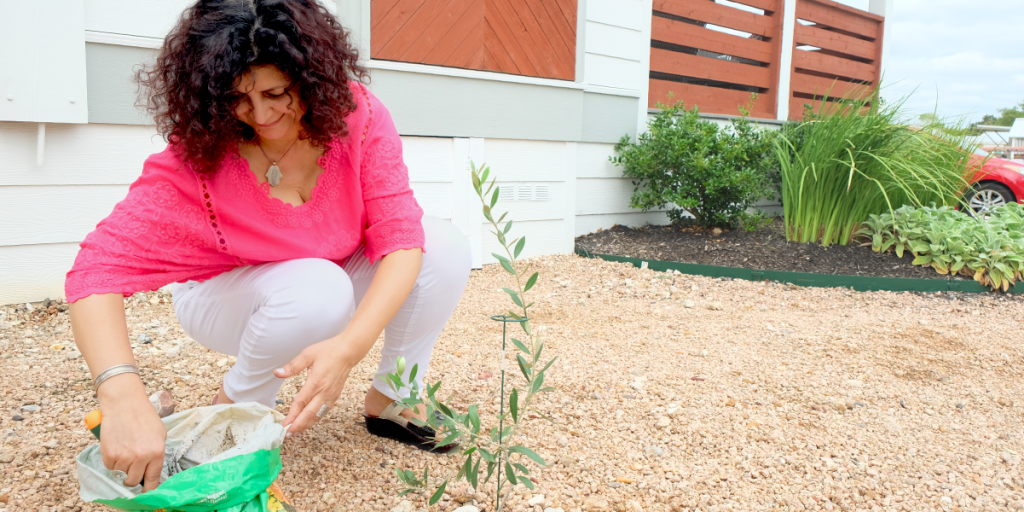
Amal plants an olive tree next to her tiny house.
In June 2021, I watched a TED talk by Sir Robert Swan, a polar explorer and the first person in history to walk to both the South and the North Poles. As I watched, I was inspired to join 170 other participants from 35+ countries on the 2041 ClimateForce Antarctic Expedition that Sir Swan was leading in March 2022.
The expedition’s mission was to help participants see firsthand the effects of climate change on Antarctica, teach them about climate science, sustainability, and leadership skills through the “Leadership on the edge program,” and equip them with the tools they need to create meaningful impact upon their return.
Left: Amal with Sir Robert Swan in Antarctica. Right: Amal takes a selfie on a Zodiac boat. Photos courtesy of Amal Morse.
How did you do it?
My participation in the expedition was educational. I also approached the trip as part of the research phase for my future documentary on Antarctica and climate change. I intend to explore the importance of the preservation of the seventh continent for the well-being of the rest of the planet and to tell the stories of incredible women around the world who are actively finding solutions to climate change and other environmental issues that have a direct or indirect effect on Antarctica.
Being part of the expedition helped me better understand the complexity of global warming and climate change. I also saw firsthand the effects of climate change on Antarctica. At the start of our expedition, one of the stations in Antarctica experienced a record high temperature, about 40°C (70°F) above normal.
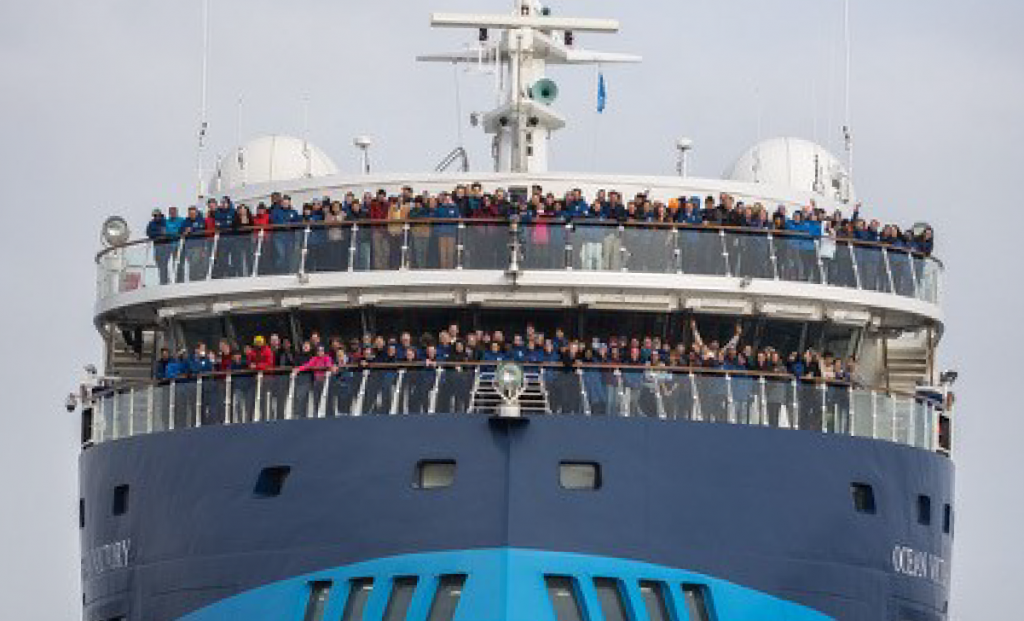
Participants of the 2041 ClimateForce Antarctic Expedition on their ship, The Ocean Victory. Photo by Trenton Branson.
What’s been most rewarding about getting involved in this way?
Everything about this expedition was rewarding! Some of the things that most stand out to me:
- Being among inspiring individuals who are so passionate about the environment, sustainability, and the preservation of Antarctica. Most of the participants were actively seeking solutions for climate change and leading sustainability projects around the world. They all made me feel hopeful for our planet.
- Being mentored by some of the best individuals in the field through workshops and presentations.
- Discovering the beauty and fragility of Antarctica and being so close to the wildlife, including whales, seals, and penguins. We had to follow strict guidelines when we set foot on the Antarctic Peninsula to protect the area and the wildlife. Among other things, we were required to stay 15 feet away from the penguins and not use their little pathways (penguin highways). But the penguins were very curious at times, and they came very close to us.
- Going on daily Zodiac cruises with guides who have a wealth of knowledge about the areas we were visiting and about local wildlife. They are very passionate about their work.
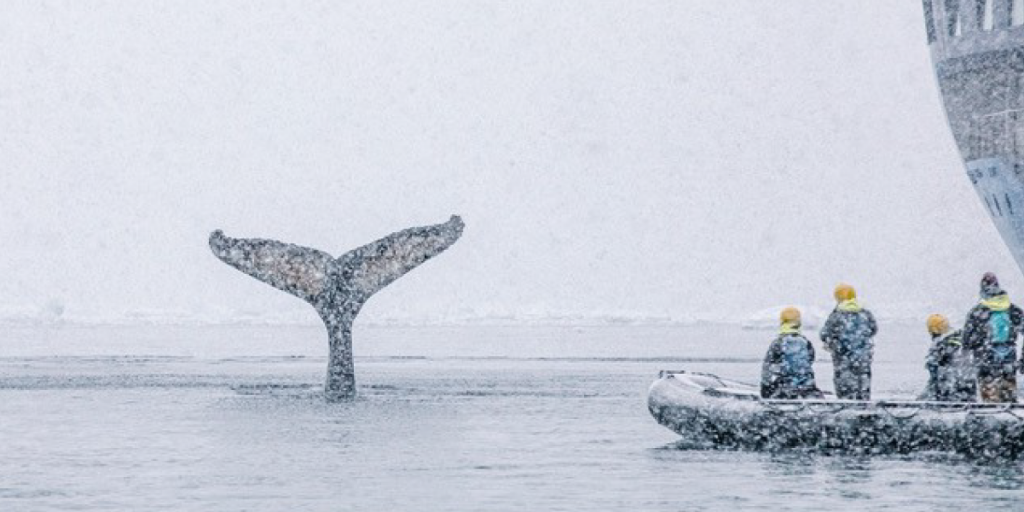
Wildlife encounters during Amal’s expedition to the Antarctic. Photos by Trenton Branson.
What’s been the toughest part?
There were a couple of challenges along the way. For me, the hardest part was raising the necessary funds in only four months.
The expedition’s total cost was around $25,000. That includes the expedition, travel, hotel, and insurance fees. To cover the expedition fees, I created a GoFundMe page to raise $19,000. I initially received small donations from family members and friends, but one day I was pleasantly surprised to receive a generous donation from Grape-Nuts Cereal!
For its 125th anniversary, the brand decided to support nine women explorers raising funds for adventures like climbing Everest or going on expeditions to Antarctica. I was chosen as one of those women.
A second challenge was the uncertainty of travel during COVID-19. I had to make sure I was COVID-free both before and during the expedition. To do so, I self-quarantined for one week before leaving Austin. When I joined the rest of the group, we stayed isolated for a few days before boarding the ship for the Antarctic Peninsula. We were tested daily for COVID-19, both in Ushuaia, Argentina, and onboard the ship.
You’ve spoken in the past about how you hope your work can inspire women to become agents of change in their communities. How has this shown up for you, and what message would you share with women looking to enter this work?
I believe that women tend to excel in everything they do if given the opportunity. Sometimes all they need is inspiration.
In my future documentary, I hope that by sharing the stories of women around the world actively working in this field, I will be able to inspire other women to find their own ways to get involved.
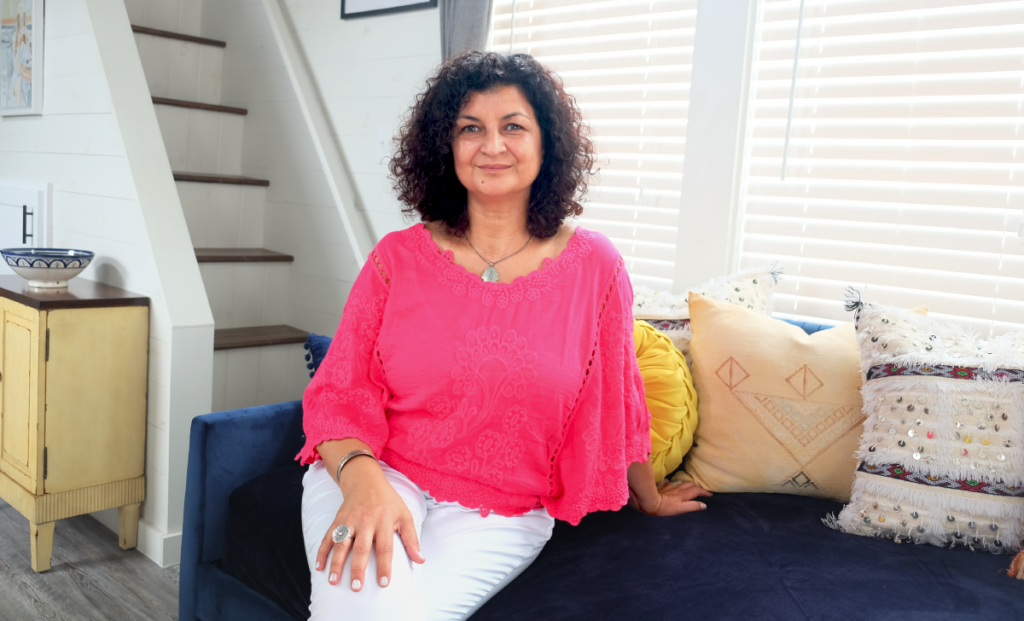
Amal in her tiny house
Passion and self-confidence are key. Women who are passionate about this field (or any other field), and believe in themselves, should go for it. It might not be easy, but persistence will pay off. Mentors, support groups, and resources can help them integrate into any field of their choosing.
Very few Austinites get the chance to travel to Antarctica. Can you share one of the most memorable experiences from your recent trip?
The whole expedition was an amazing experience from start to finish! A few things that most stayed with me are:
- Crossing the famous Drake Passage. The Drake Passage connects the Atlantic and Pacific oceans between Cape Horne and the South Shetland Islands. It is one of the roughest seas in the world. During our expedition, we experienced 13-foot swells, and the passage lasted about 48 hours.
- Cruising in a Zodiac among dying icebergs in “The Iceberg Graveyard.” This is a region where icebergs go to die after drifting in the Antarctic waters for years. By the time the icebergs make it to this location, they have formed amazing shapes and colors that leave us in awe. Some of our guides like to call this place "The Iceberg Garden" because of its beauty. The beautiful blue stripes in the icebergs form when crevices fill with water, and the water freezes so quickly that no bubbles can form.
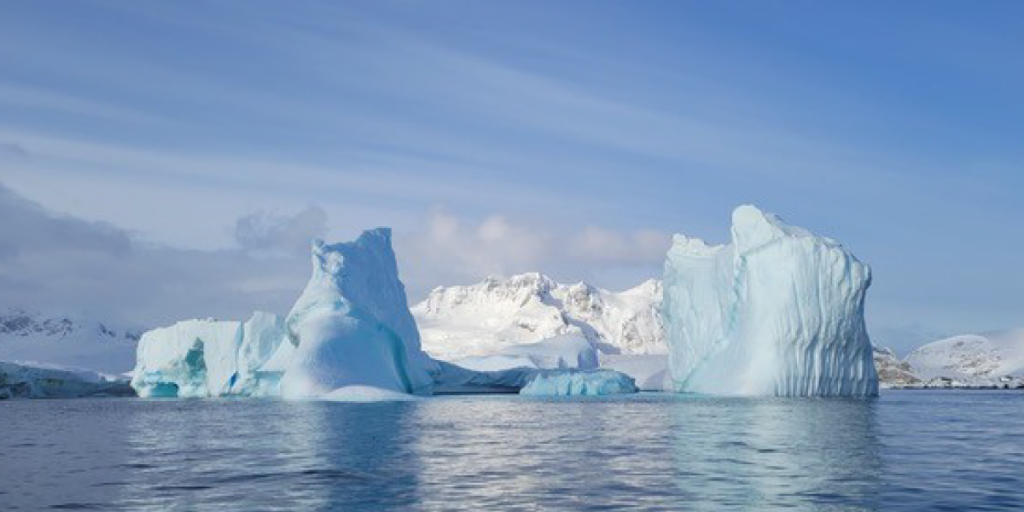
Photos of “The Iceberg Graveyard.” Photos by Trenton Branson.
- Sailing into an active volcano in Deception Island. The volcano is accessible from the sea by a single narrow passage. It’s the only place on the planet where ships can sail directly into the center of a submerged caldera. The volcano last erupted in 1970. Whalers Bay in Deception Island is a designated historic site by the Antarctic Treaty. There, we visited the remains of the Norwegian whaling station. It serves as a dark reminder of a period in our history when some species, including the blue whale, were hunted almost to extinction.
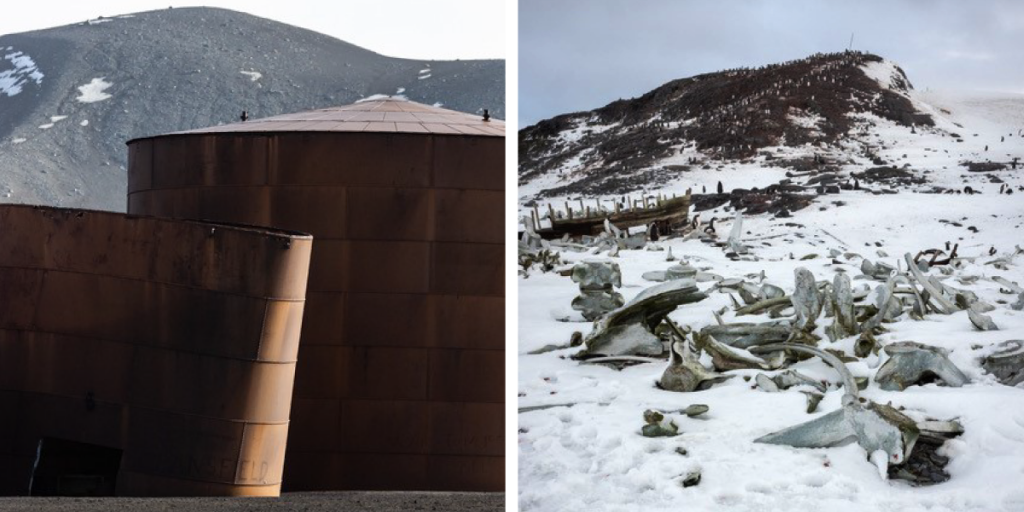
Left: Boilers used to extract oil from whale’s blubber. Right: Whale bones scattered across Deception Island. Photos by Trenton Branson.
Is there a book, documentary, or other piece of media you would recommend for folks wanting to learn more about these topics?
For those looking to learn more, I recommend two documentary films: Chasing Ice, directed by Jeff Orlowski, and Climate Change - The Facts with Sir David Attenborough.
What advice do you have for others?
I believe that we should start where we’re at. We can start with our home, our office, and or our daily life by making small changes to protect the environment. When we feel we need to do more, we should find the way that speaks to us. That might be organizing cleanups in our community, planting trees, or raising awareness through art or public speaking. We should find our own way to be involved. For me, that is through documentary filmmaking.
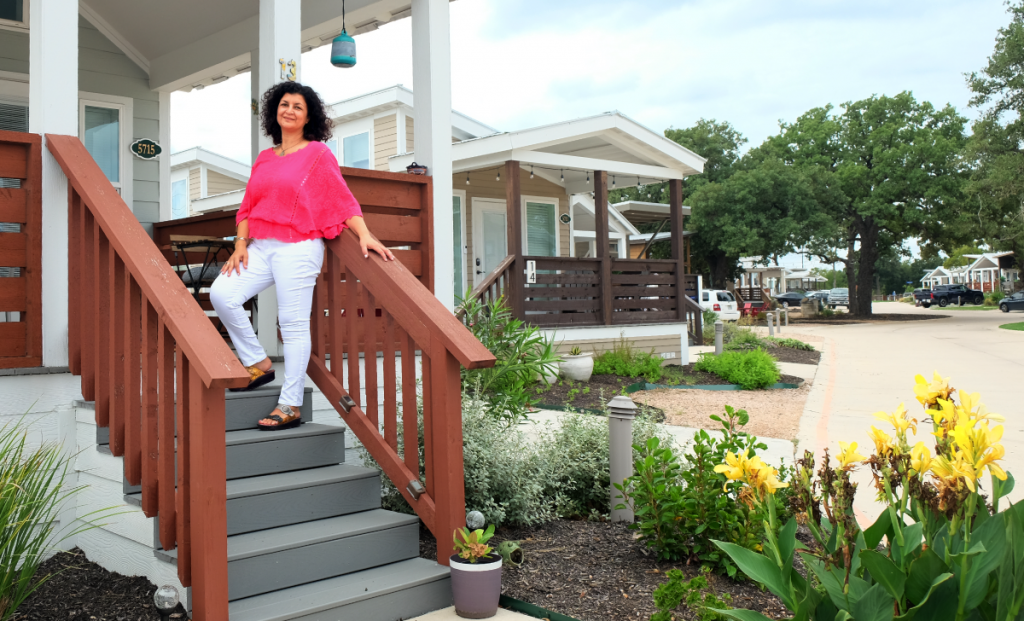
To learn more about Austin's net-zero goal and explore actions you can take to support a greener community, view the Austin Climate Equity Plan.
Share your Net-Zero contributions with us on X (formerly Twitter) or Facebook, and use #NetZeroHero. If you know a Net-Zero Hero (or heroes!) who should be recognized for their efforts, send your nomination to climate@austintexas.gov.


